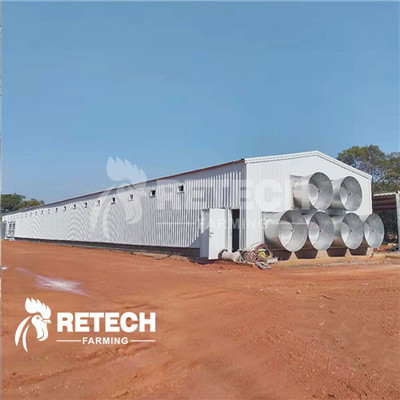To ensure good egg production performance in summer when temperatures are high, it is necessary to do a good job of management. First of all, the feeding of hens should be reasonably adjusted according to the actual situation, and attention should be paid to the prevention of heat stress.
How to feed egg-laying hens in summer?
1. Increase the nutrient concentration of feed
In summer, when the ambient temperature exceeds 25℃, the intake of chickens will be reduced accordingly. The intake of nutrients also decreases accordingly, resulting in lower egg production performance and poorer egg quality, which requires an increase in feed nutrition.
During the high temperature season, the energy needs of laying hens are reduced by 0.966 megajoules per kilogram of feed metabolism compared to the usual feeding standard. As a result, some experts believe that the energy concentration of feed should be appropriately reduced in summer. However, energy is the key to determining the egg production rate after the laying hens have started laying. Insufficient energy intake is often caused by reduced feed intake during high temperatures, which affects egg production.
Tests have shown that egg production rate can be significantly increased when 1.5% cooked soybean oil is added to feed during high summer temperatures. For this reason, the amount of cereal feed such as corn should be reduced appropriately, so that it generally does not exceed 50% to 55%, while the nutritional concentration of feed should be increased appropriately to ensure the normal performance of its production performance.
2.Increase the supply of protein feed as appropriate
Only by increasing the protein level in feeds as appropriate and ensuring the balance of amino acids can we meet the protein needs of laying hens. Otherwise, egg production will be affected due to insufficient protein.
The protein content in feed for laying hens in the hot season should be increased by 1 to 2 percentage points compared with other seasons, reaching more than 18%. Therefore, it is necessary to increase the amount of cake meal feeds such as soybean meal and cotton kernel cake in the feed, with the amount being not less than 20% to 25%, and the amount of animal protein feeds such as fish meal should be reduced appropriately to increase palatability and improve intake.
3. Use feed additives carefully
To avoid stress and reduced egg production caused by high temperature, it is necessary to add some additives with anti-stress effect to the feed or drinking water. For example, adding 0.1% to 0.4% vitamin C and 0.2% to 0.3% ammonium chloride to the drinking water can significantly relieve heat stress.
4. the reasonable use of mineral feed
In the hot season, the phosphorus content in the diet should be increased appropriately (phosphorus can play a role in relieving heat stress), while the calcium content in the diet of laying hens can be increased to 3.8%-4% to achieve a calcium-phosphorus balance as far as possible, keeping the calcium-phosphorus ratio at 4:1.
However, too much calcium in the feed will affect the palatability. In order to increase the amount of calcium intake without affecting the palatability of the feed for laying hens, in addition to increasing the amount of calcium in the feed, it can be supplemented separately, allowing the chickens to feed freely to meet their physiological needs.
We are online,what can i help you today? Please contact us at director@retechfarming.com.
Post time: Aug-18-2022











